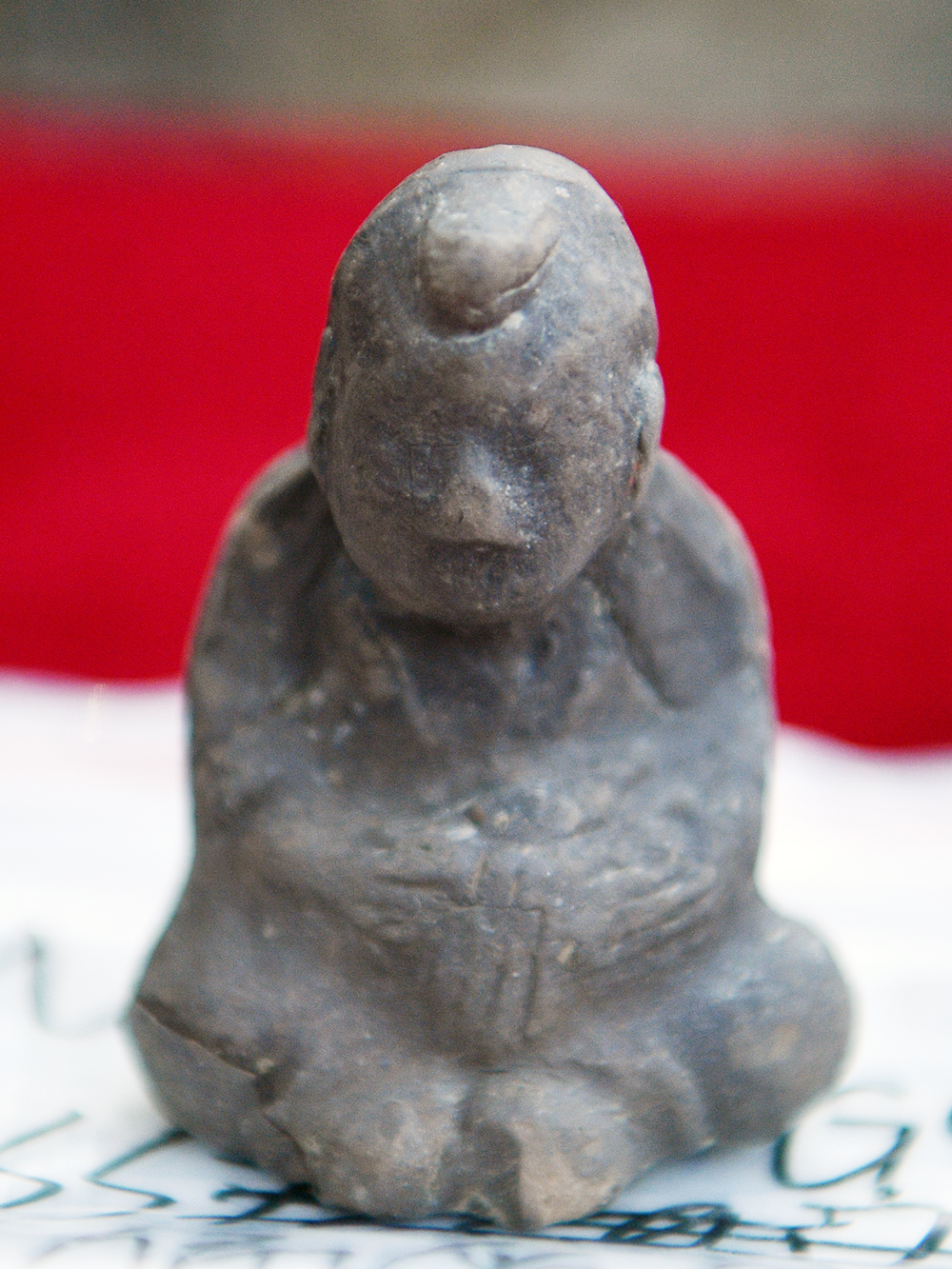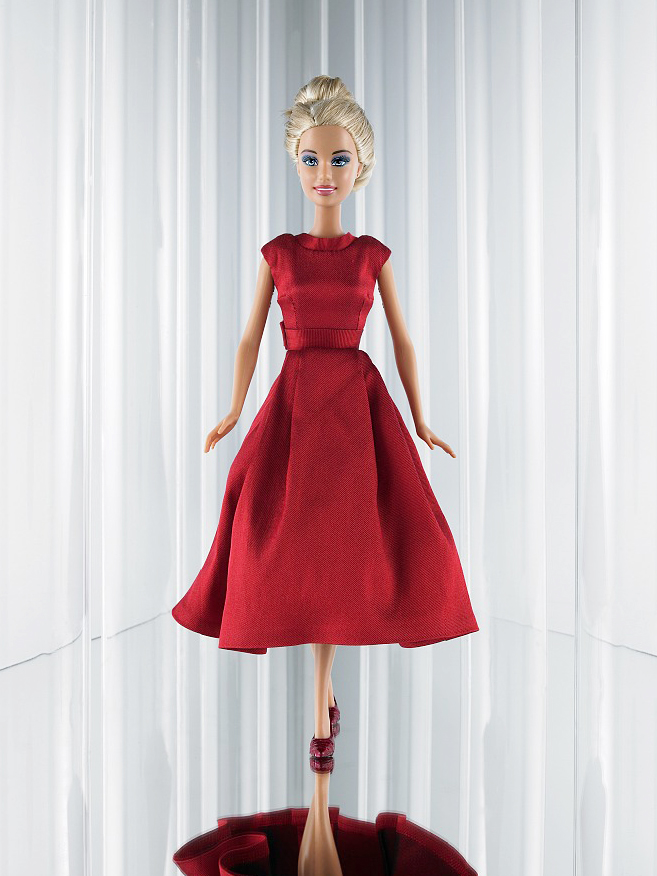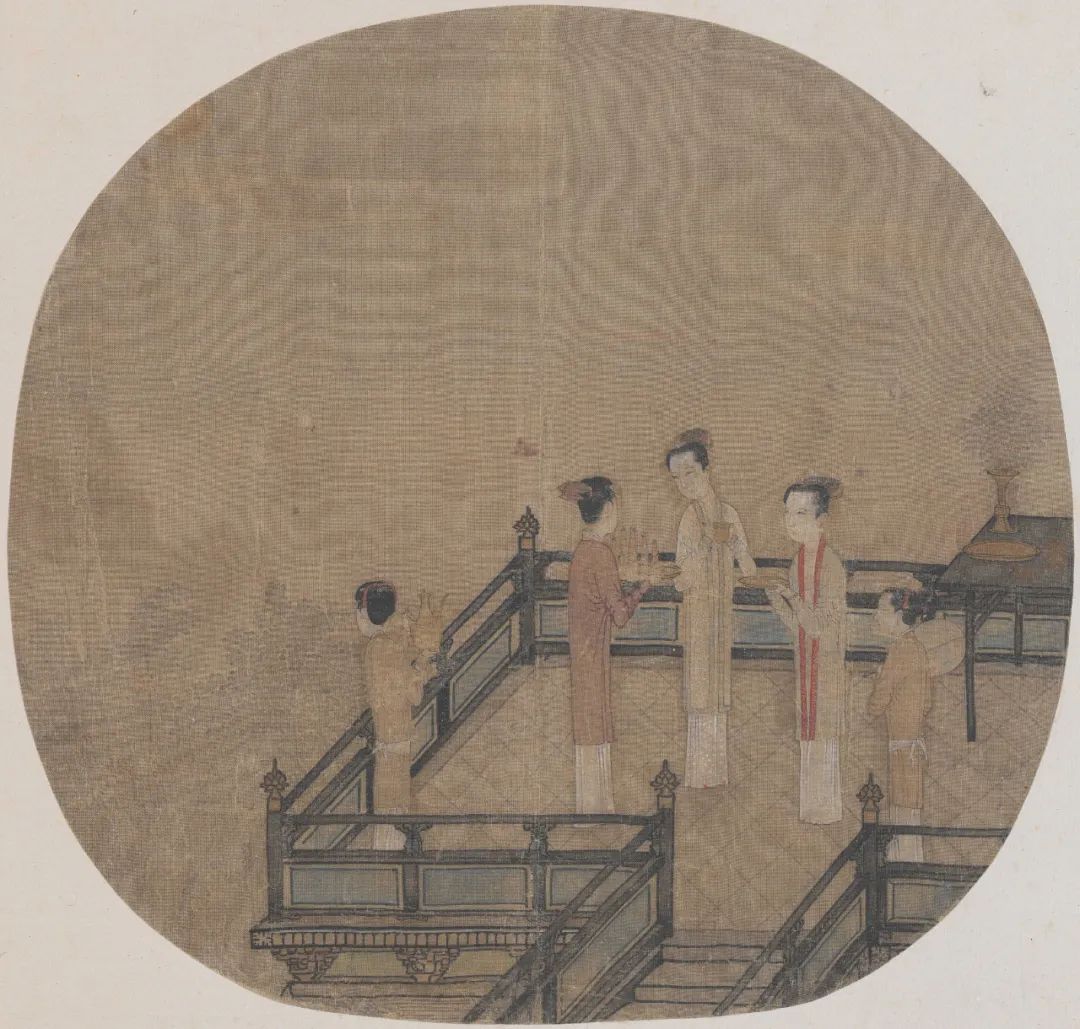During the Song Dynasty (960-1279), there was a beloved toy known as "Mo He Le," which is hailed as the "Barbie doll" of its time.
Mo He Le gained popularity during the Song Dynasty on the traditional Chinese equivalent of Valentine's Day – Qixi Festival – and became widely sold. A book from the Song period, called "The Pact Is Talking About," provided detailed information about the characteristics and popularity of Mo He Le.

A Mo He Le figurine unearthed from a Song Dynasty site is discovered in the Dongpo District of Meishan, Sichuan in 2019. /CNSPHOTO
A Mo He Le figurine unearthed from a Song Dynasty site is discovered in the Dongpo District of Meishan, Sichuan in 2019. /CNSPHOTO
Mo He Le was predominantly crafted from wood and clay materials, featuring intricate details in body shape, limbs, facial features, and hair, accompanied by beautiful miniature clothing. Some Mo He Le figurines even had fixed poses, with a characteristic feature being the holding of lotus flowers and leaves.
The popularity of Mo He Le sparked a trend of imitation among children during the Song Dynasty. It was common for children to emulate the appearances of these toys. When adults praised a child for being cute and lovely, they would say, "You look just like a 'Mo He Le' doll."

A barbie doll dressed in red. /CFP
A barbie doll dressed in red. /CFP
Barbie dolls are famous for their fashionable styles, diverse clothing, and abundant accessories. Similarly, Mo He Le figurines captivated children with their exquisite craftsmanship and charming appearance. Despite being made from different materials, both toys aimed to create lifelike figures that fostered emotional connections and resonated with children.
The Palace Museum in Beijing houses a renowned painting by the esteemed Song painter Chen Qingbo, which depicts a court lady holding a plate while an aristocratic woman gazes at the items on the plate.

A painting by Song artist Chen Qingbo depicts a court lady holding a plate while an aristocratic woman gazes at the items on the plate. /CFP
A painting by Song artist Chen Qingbo depicts a court lady holding a plate while an aristocratic woman gazes at the items on the plate. /CFP
Recent research conducted by experts revealed that the items depicted on the plate were none other than the popular Mo He Le dolls of that time. This painting genuinely illustrates the elevated status of Mo He Le as a form of upper-class entertainment and enjoyment, providing valuable visual material for contemporary research.
Despite the disparities in era and culture, Mo He Le during the Song Dynasty shares similarities with modern Barbie dolls in terms of their appeal to children, toy design, and societal influence. Both toys emphasize the significance of children's entertainment and the development of imagination, while playing significant roles in the popular culture of their respective times.